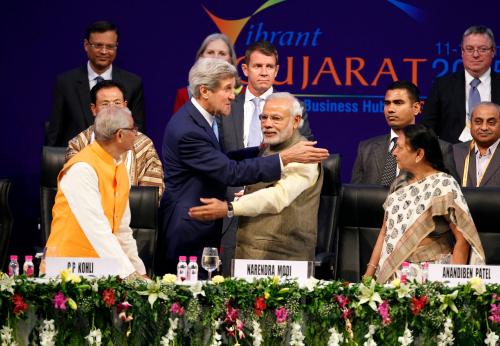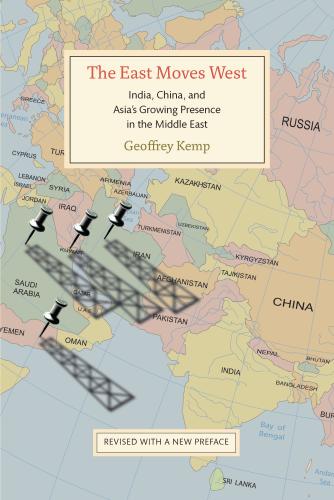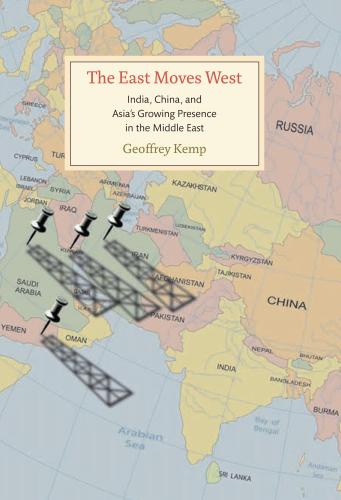Content from the Brookings Institution India Center is now archived. After seven years of an impactful partnership, as of September 11, 2020, Brookings India is now the Centre for Social and Economic Progress, an independent public policy institution based in India.
The chapter is part of a briefing book ‘India and Africa: Forging A Strategic Partnership’ edited by Dr. Subir Gokarn, Dr. WPS Sidhu and Shruti Godbole.
The low or anaemic growth rate being experienced in the recent past in South Africa and many other parts of the world is cause for concern. While global growth is a major factor in slowing down domestic growth, it is not the sole factor. South Africa needs to become more ambitious and raise the bar towards a higher rate of growth. So a fundamental question becomes, how fast can we expect to grow despite the heavier headwinds that confront the global economy? How has India done it? What lessons, if any, can we draw from the Indian case?
The Indian experience is telling in what it suggests about the relationship between government and the private sector. More so because the current ambivalence between the private sector, trade unions and the government in South Africa cannot continue to persist. Despite the emergence of the National Development Plan (N DP) , the different forces in South Africa still need to find a way to work towards a common vision.
The Indian Experience
From independence till the 1980’s the Indian economy grew at a modest rate of 2-3 per cent. The standard explanation for India’s recent growth spurt has been ascribed to economic reforms initiated by Manmohan Singh in 1991. However, the evidence shows that this is not the case. Economic growth began to double in the mid 1980’s. Dani Rodrik and Arvind Subramanian have argued that the acceleration in the rate of growth was primarily due to a change in the attitudes of the national government towards the private sector. It is now conventional wisdom that India’s growth acceleration predates the 1991 reforms.
What this kind of reform indicates is that governments do not need to do an enormous amount to unlock the growth potential but simply clean up the regulatory impediment to generate investment. Marginal changes to the regulatory environment can trigger an investment response. This can change the nature of the conversation as well as the narrative for growth and structural change in the economy.
The South African Economy
It is important to point out that the South African economy has gone through a whole series of reforms since 1994. Though the economy peaked in mid-2000, at present growth is low and well below potential. The question that arises is what is the problem? Is it an implementation problem or does more need to be done? Is there something wrong with the development strategy in place? Or what is South Africa’s License Raj?
The South African economy grew at 3.2 per cent a year on average from 1994 to 2012. Potential growth is currently thought to be around 3-5 per cent, though it was estimated at around 4.5 per cent during the four-year period from 2004 – 2007 when growth averaged around 5.5 per cent. Economic growth however, has mainly been driven by domestic demand and financed through a persistent current account deficit. The current account balance was close to zero around 2003 but has subsequently increased, and regularly hovered at around 6 per cent of GDP.
We should do everything possible to achieve a higher growth rate. Our potential rate of growth – that is the maximum that can be attained given favourable internal and external conditions – is determined not only by improving our productivity and efficiency of investments, but also by improving governance in the overall political economy. Whether it can be achieved depends on domestic conditions as well as the global environment. However, potential growth is only part of the story. To achieve a higher and sustainable growth rate, South Africa will have to pursue reforms and eliminate distortions and imbalances in the economy. The budget for the 2015 fiscal year and the measures announced attests to this.
This requires government not only to be proactive but to be innovative as well. If South Africa is to succeed it will have to become more competitive, strengthen its institutions, and integrate its micro and macro-economic strategies in a coherent and coordinated manner. The failure to grow remains a key challenge. It is unlikely that a single grand strategy whether it is improving access to finance, regulating capital flows or deregulating the labour market – can unlock the path to rapid, inclusive growth. This challenge highlights the need for government to become ever more agile and responsive. In so doing, it will move on many fronts simultaneously, engaging with the real economy, and learning about the problems confronting civil society, as well as responding smartly and creatively. Above all it will have to rebuild trust to foster the conditions required for structural change and reform.
Although our economy is subject to movements in the global business cycle, ultimately we have to improve the structure of the economy. Structural reform in the South African economy is essential to increase productivity. Hence, it entails reforms in the product and labour markets. The product market requires that we reduce the barriers to entry by increasing the scope for new entrants and make the economy more competitive and less concentrated. The labour market needs to become more efficient and labour-absorbing for small and medium enterprises. More fundamentally, the economy needs to make a structural shift towards an investment led growth path as opposed to its traditional reliance on consumption as a driver of economic activity. As stated in the Budget Review 2015 “restoring confidence in the future growth of the economy is the key to unlocking the long-term investment commitment of private funds.”
What India’s growth experience suggests is that it is possible to unlock growth, and that the route to achieving this is not necessarily the Washington Consensus route. What was the key difference? In India the reforms were in favour of existing business. This approach avoided the creation of losers. It may not be the most efficient, but turned out to have had a positive impact.
The case of India provides an interesting case for understanding what inhibits the growth process. India’s growth accelerated in the early 1980s. The change in attitude by the Indian government was key. Quite simply, it entailed eliminating the License Raj System or making small adjustments such as reducing some business taxes and easing access to imported inputs. India doubled its growth rate from 2% to 4% during the 1980’s. Yet India is still plagued with bureaucratic inefficiency and a poor infrastructure. Later, in 1991, India liberalised the economy much further but the initial spurt to growth took place in the 1980’s. The point is that when a country is performing below its potential, it does not require much to unlock inefficiency to boost the growth rate. Small changes can turn into big outcomes.
There are many areas where growth enhancing reforms could take place and which will signal a change in attitude and enable a more dynamic relationship with the private sector and the trade unions. This will require more than a decision from the market or legislation. It will have to involve labour, government and business. Michael Spence suggests while “public and private interests are not perfectly aligned today, they are not perfectly opposed. Relatively modest shifts at the margin could them bring them back in sync.”
Growth accelerates and sustains through new companies and new innovations that create new jobs. However, more often than not our discourse is dominated by big business, big government and big unions. Though these are dominant forces in most economies, including our own, they do not constitute the sum total of all economic activity. Subtle changes in economic policy can have significant effects on the nature of the growth process of a developing economy. This area deserves significantly more attention in the policy discussions on economic policy.
The National Development Plan states, “leadership, unity and cohesion are difficult in our still-divided society. Yet these are the very things that help to anchor successful nations and development strategies. Leadership is required to win broad agreement for the plan, to implement it, and to make sacrifices for a better future. A capable, efficient, and fair state is needed to support it, and partnerships based on mutual trust are vital. Unless we work together, sacrificing short term gain for long-term prosperity, no single part of South African society can achieve its objectives.”
The South African economy holds great promise which can be realised if we recognise the flaws and attempt to correct them, and find a consensual way forward with a shared sense of responsibility. We most certainly cannot afford to succumb to pessimism. As Paul Samuelson puts it, “every good cause is worth some inefficiency,” equity and social cohesion are among them. While there is a demand for jobs, a hunger for education, and a desperate need for health, growth enhancing reforms cannot be paralysed. The challenges facing us are immense but so are the policy choices confronting our economy. We have to ensure that the national interest and inclusive growth trumps other impediments, including vested interests. We also need to draw on some experiences which can strengthen our economy and make it more resilient in the face of adverse pressures emanating from the global economy.
In conclusion, some lessons can be drawn from the Indian experience despite the very different context. The primary reason for choosing India as a comparative experience is because of the distrust that existed between the private sector and government. A change in attitude can come about through lifting the regulatory burden, or License Raj, and broadening economic activity whereby it becomes more inclusive and participatory. The private sector will equally have to demonstrate its ability to invest in a way that is less about the short term but more towards the long term.
The Brookings Institution is committed to quality, independence, and impact.
We are supported by a diverse array of funders. In line with our values and policies, each Brookings publication represents the sole views of its author(s).







